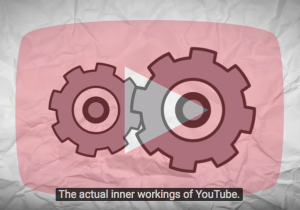
Many changes have been occurring with YouTube over the past year, and we will cover these more in-depth shortly. However, many long-time successful channels have recently reported drops in their advertisement income, views, and subscribes. This phenomenon appears to mostly affect YouTubers who use YouTube as their primary platform to deliver their material, as opposed to companies that use it as a communication and engagement platform and video hosting service.
Watchers of video content have moved online, both using desktop computers and mobile devices. One of the predictions for 2016 was that we would see more network TV showing up on YouTube and on other social media video platforms, and this has happened. Meanwhile, YouTube has started promoting content based on minutes watched, which tends to have a bias toward long-form content and creators that can churn these out every day. Most YouTube creators that make up the traditional YouTube creator base cannot keep up with those demands to compete with large companies like network TV that have a full staff for exactly that purpose.
YouTube creators trying to keep up with such a schedule to stay competitive are likely to suffer burnout. Without it being financially and practically feasible to continue as advertisement and views go to corporate interlopers, these YouTube creators are likely to publish less of the content we associate with YouTube, changing the online media landscape. These changes in YouTube betray the customer and creator base that turned to YouTube as the alternative to corrupt and crappy TV content. Many of us cut out TV almost entirely following the launch of YouTube, combining online video, online radio/podcasts, other alternative news sites, DVD, and VHS (that’s right!) for our news & entertainment video content sources.
Google/YouTube apparently thinks it can get more money by featuring Network TV content that can keep up with the highest needs for content flow, so it seems they are content to throw the content providers that made the platform under the bus. We’ll see how that turns out long-term for them, and whether these creators will go elsewhere if they choose to continue and survive burnout.
It’s the economics affecting their financial ability to carry on creating that is the ultimate issue involved in these changes. As for businesses and vloggers and musical artists utilizing YouTube as a searchable video hosting and engagement platform that is tied to Google search results to get target customers the content they want, this should continue to work unless Google significantly changes the algorithm in that regard. Such changes would seem to contradict Google’s best interests, as relevant search results remain their biggest calling card.
MatPat of Game Theory & Film Theory breaks this down in the 15-minute video below. We will be weighing in on this and its larger implications in the near future… If you would like to consistently give your target customers the information they want via VIDEO and WRITTEN CONTENT, contact MEDIA BLITZ PUBLICITY to discuss our Video Content Marketing CONSTANT CONTENT FLOW programs… They’re exactly what Google & your target customers want when it comes to answering searches for quick & concise answers to practical questions, creating an opportunity to engage and convert!



